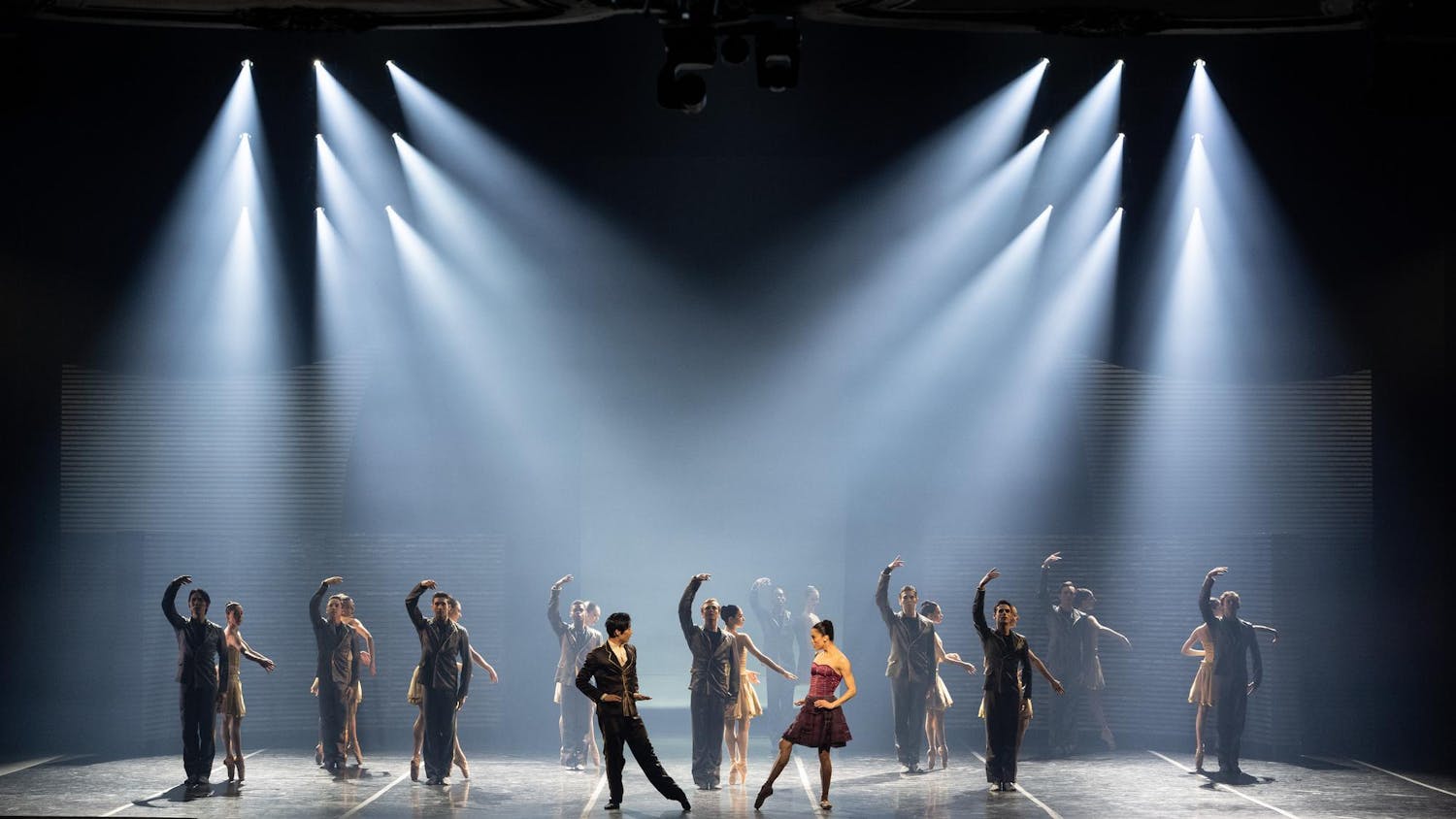Sylvan Esso is known for its ambiguous lyrics, tender vocals and syncopated rhythms. With artistic decisions departing from indie classics like “Coffee” (2014) and “Die Young” (2017), its latest release “Free Love” (2020) guides listeners through a tour of the human experiences of vulnerability, relationships and change.
Sylvan Esso’s song-writing process is usually split among its members — vocalist Amelia Meath writes the lyrics while producer Nick Sanborn handles the instrumentals. Meath, however, stepped into a producing role for “Free Love,” and her presence is felt in the album’s unique ability to maintain deep meaning engulfed in playful rhythm.
Opening with “What If,” a somewhat scattered piece with sparse instrumentals and distorted vocals, the album cues us into a state of instability and questioning: “What if End was Begin? Then would men be like mothers?” The nature imagery pulls listeners into a terrifying storm, one where “oceans turn to clouds” and life ignores the rules. This unstable condition forces us, as well as Meath herself, into memory recollection — an effort to seek answers within an uncontrollable world. In this form, the lyrics introduce the album as a “memory bank” for us to explore, whether it be our own, Meath’s, or that of which all humans inherently experience.
This haunting introduction sharply transitions to the flirty, hopeful tone of “Ring” which playfully signals listeners to the fresh feeling of seeing a lover across a bar for the first time. However, contained within this honeymoon and dance-like rhythm lies something deeper: lyrics such as “it occurred to me we could never be” and “never melted under forever anyway” reflect a self-destructive attitude of allowing the “Ring” to sweep you into a state of ecstasy while in acknowledgement that the experience is surface level and fleeting.
The verses in “Ring” take a similar cadence as found in the “The Glow,” from the duo’s sophomore album “What Now” (2017).Its steady beat gives way to the chorus’s long, wave-like tones, imitating the sudden onset of pure joy. The song poses the pleasures of the moment as an enigma: are they distractions or just simple manifestations of joy?
The upbeat tempo of “Ferris Wheel” and “Train” reinforce this idea by presenting the individual as stuck on an ever-moving “wheel” of experience. Released on July 21, the album’s first single “Ferris Wheel” captured fans’ attention with its light-hearted, upbeat tempo and vivid summer imagery. The song is about “discovering your power and awkwardly figuring out how to wield it,” according to the band’s Instagram.
Very much a song for dancing, “Ferris Wheel's” playful nature is best shown through its pulsing melodiesand questions that demand a response. On par with the album’s theme, “Ferris Wheel” traces the vignettes of a memory, clinging to objects like a “white tee” or the “neon lights” as well as the temporary state of entrancement: “you’ll do fine for tonight.”
The next track “Train” delves into the physical side of romantic encounters. With “wind in my hair” and “nothing in my brain,” Sylvan Esso adds a layer of physicality to its inspection of memory, while furthering the established blind, upbeat atmosphere of satisfying cravings for feeling and enjoying sweet ignorance.
“Numb” marks a transition in both the album and the individual’s development. It departs from dance into intimate reflection, acknowledging the anxiety of an increasingly complex world flooding with immediate emotional paralysis. Hoping to regain sensation, Meath encourages us to join in on “shaking out the numb” through formless dance “like a kid you see.”
“Free” resumes the disordered structure and minimalism of “What If,” while taking a more folksy approach to its vocal cadence. Much in the way of “There Are Many Ways To Say I Love You,” a stand-alone single released in 2017, “Free” has no discernible pattern in how its lyrics are sung.This draws us into the individual’s stream of consciousness that finally expresses a level of self awareness: “To be free in illusion/In an illusion of your making of me.” The narrator has finally transitioned from external rapture to finding fulfillment within.
“Frequency” begins the return to the upbeat: After engaging the reflection shown in “Free,” the individual can begin to move back into a greater context.
The song evokes the image of tuning a radio with its punctuating, static-like sound and brief pauses in between. With lyrics like “She's on a frequency/and I caught it,” “Frequency” addresses the moment of connection between individuals and the desire to “bathe in my new love.”
The song draws distinct parallels with “Ring,” but uses the words “frequency” and “wave” instead of “ring” to the same themes. This establishes a departure from fleeting, or “ringing” passions to something deeper and more permanent. It’s clear the feeling is a strong, overwhelming passion, but the soft vocals and buoyant delivery gives these feelings a level of vulnerability, knowledge and stability.
The album’s last uptempo song, “Runaway,” returns to dance in its tempo and rhythm. It deviates, however, in its attention to introspection and an individual’s agency in a given situation, perhaps through understanding the self in the context of a simply scary world. The song outright admits the individual's tendency to “run away,” a level of awareness only beginning to be seen in “Free”: “You can't just wait for them to show up / You've got to got to got to run away.” The repetition of “got to” brings us back into the individual’s consciousness; however, now they can maintain this internal reflection within a rapid-pace, upbeat world.
The album’s penultimate piece “Rooftop Dancing” gives an introspective step into progress; after reflecting on momentary love and its inevitable shortcomings, Meath begins to understand “free love” as a childlike experience of authenticity and vulnerability. She presents a free flowing look into dancing as freedom that is not of rapid movement but rather of "Slo-mo throwing [her] body in the air.” Sylvan Esso emphasizes this childlike feeling by interspersing the song with adolescent vocals, thus drawing listeners into the experience of letting loose to the rhythm and to inhabit this youthful dream world.
Closing the album, “Make It Easy” takes the messaging of “Rooftop Dancing” to plead for a simpler existence, a life often experienced in childhood. Emphasized by repetition and a gradual crescendo, the track’s distorted vocals add tension that ultimately becomes unsustainable.
Meath’s vocals are forceful yet restricted, creating an intimate feeling within the mind of listeners. Each line is briefly delivered, with its tone left hanging in the air and leaving the listener wanting more. Recalling a time when the “World was smaller,” “Make It Easy” captures the vulnerability and simplicity of childhood, requesting that we “Play it again.”
It marks a transition into knowledge and progress. We can now move forward and “make it simple” in an untraditional sense: although our world will never lie stagnant, we can find solace in accepting this while still choosing light, authenticity and “Free Love.”





